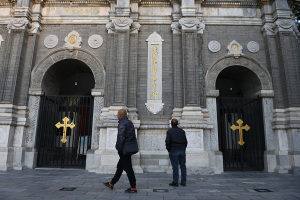Additional Details Revealed About the 300-Year-Old 'Holy Grail of Shipwrecks'
The Remus 6000 aided in the discovery of the shipwreck back in 2015
Hidden beneath the oceans are all kinds of mysterious organisms and objects.
They have remained out of sight because they are perpetually out of reach, but there are times when human ingenuity, curiosity and determination can work together and peel back that layer of mystery for even just a bit.
Something similar to that happened back in 2015.
Members of the Woods Hole Oceanographic Institution recently discussed an interesting discovery after receiving permission from different agencies as well as the Colombian government, according to a report from The New York Times.
LiveScience recently reported that the Maritime Archaeology Consultants and the Switzerland AG were the other agencies involved in the search.
So why did the WHOI require permission from the Colombian government and those agencies to talk about this particular discovery?
That's because the discovery in question is the Spanish galleon known as the San Jose.
The San Jose sank to the bottom of the Carribean off the coast of Colombia over 300 years ago.
Over the years, the San Jose had earned a reputation for being a particularly fascinating maritime mystery, with many even referring to it as the "holy grail of shipwrecks."
The shipwreck was found with the use of the WHOI's autonomous underwater vehicle known as the REMUS 6000.
Back in November of 2015, the REMUS 6000 captured some side sonar images, and upon inspecting those, it was discovered that the San Jose was lurking beneath more than 2,000 feet of water.
Further evidence that the find was indeed the San Jose was obtained after the REMUS 6000 took pictures of the galleon's cannons. The cannons were found to have dolphin engravings similar to the ones that could be seen on the San Jose.
Back when it was still operational, the San Jose was intended to carry different kinds of precious materials that were supposed to help the Spanish succeed in the War of Spanish Succession against the English.
The San Jose's journey was cut short, however, as it came under fire from a quartet of English ships. The ship sank not long after and likely settled at the location where the REMUS 6000 found it more than three centuries later.
Numerous casualties were likely caused by the ship's destruction.
As for the precious materials aboard the San Jose, what happened to those materials remains unknown, though it's believed that they will be valued at around $4 to $17 billion today.
The Colombian government is currently planning to construct a museum that will house the remains of the shipwreck.
The San Jose is not the first remarkable discovery that can be attributed in part to the REMUS 6000 and it likely won't be the last.
According to the WHOI, the REMUS 6000 is capable of remaining operational even under 6,000 meters of water, or just a little over 19,685 feet.
It's clear that the REMUS 6000 is still capable of finding more discoveries that are just lurking underneath the waves, and it will be interesting to see what it finds next.
More news about the San Jose and the REMUS 6000 should be made available soon.




























